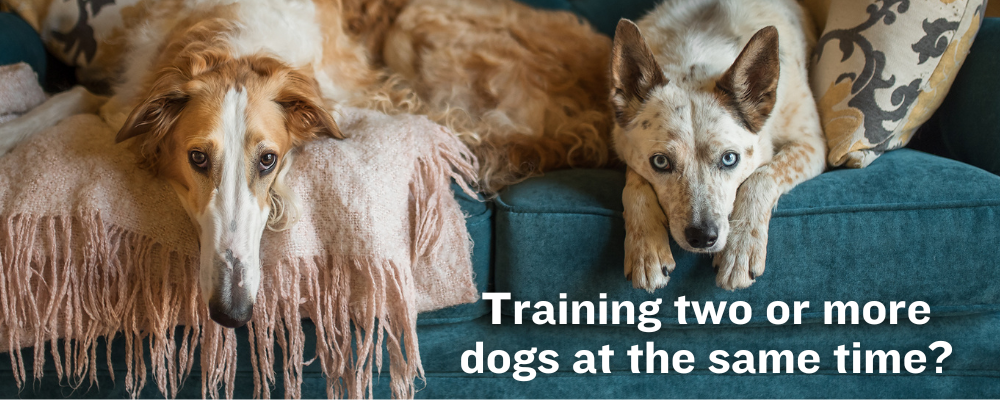If you already own a female German Shepherd and considering getting another female GSD, this is an article for you.
It may not be the best idea to have two German Shepherds live inside the same house as two female dogs living together tend to show more gender aggression than males.
However, if you must get another female, you need to be strategic, aka have a plan. In this article, we will expose the reasons why female GSDs have a hard time getting along and provide some tips on how to make their relationship work out.
Related post:
Is It Better to Have Two German Shepherds?
Do Two Male German Shepherds Get Along?
Do German Shepherds of the opposite sex get along better?
German Shepherds are more likely to become aggressive towards same-sex German Shepherds; however, there have been instances when female and male German shepherds have not gotten along.
The best practice with these is to ensure that the dogs are properly and tactfully introduced to one another. Ensure to watch out for aggressive behaviors and contact a canine behaviorist if you see any that you cannot handle.
What are the extra costs involved?
One of the biggest factors you should consider before getting a second German Shepherd is the cost. German Shepherds are not cheap dogs. You are looking to spend between $1,800 to $3,000 on a puppy from a reputable breeder.
Also read: How Much Is A German Shepherd Puppy? (Plus Annual Expenses)
This cost does not include the additional fees for pet insurance, vet bills, pet supplies, and more.
The average price of raising one dog is between $3,000 to $3,500 annually for large breed dogs, which doesn’t include emergencies. (Source akc.org) Before getting a second dog, you need to consider if you can financially afford it.
Why do two female German Shepherds Show more aggression than their male counterparts?
Thinking that both ladies may work it out together is not a good choice. Very likely, fights may escalate, and one dog may severely injure or kill the other. This seems to happen most often when the two dogs are close in age or when one dog is older and a newer dog is introduced to the pack.
PetHelpful.com
If you are looking to adopt a new German Shepherd, it might not be best to adopt a female one especially if you already have one. This is because female German Shepherds are known to exhibit aggressive behavior toward other females due to several factors, including their breeding, gender hierarchy, heat seasons, etc. which male German Shepherds do not typically exhibit or experience.
Territorial and protective nature
Female German Shepherds are protective of its home and owners. This is due to their maternal instinct, making them excellent guard dogs. When introducing another female German shepherd into a home, owners should be cautious as these may lead to fights. The already-housed female German Shepherd is likely to exhibit territorial aggression as she may sense the new female as a threat to herself and the home. A sure
sign of your female German Shepherd’s protective nature can be seen when they are growling or stressing out when newcomers come around.
Breeding History (competition for dominance)
Breeding history plays a big role in this behavior, likewise the dog’s personality and individual temperament. In the wild, fighting among females is common in order to establish a hierarchy within the pack.
In the same vein, a female German Shepherd will fight an incoming female into the home to establish the hierarchy in the home. Female dogs tend to be more aggressive than males.
Female animals will more commonly fight than males, as the males will usually have their hierarchy while the female German Shepherds would have to fight for theirs. Female German Shepherds are always better around children due to their non-dominant nature, as opposed to other female German Shepherds who will most likely be asserting their dominance in the home.
Mood disruptions by heat periods
Female German Shepherds, like other female dogs, experience behavioral changes during their heat period; this can cause them to be aggressive to owners and other female dogs. This is because the hormone changes they experience can affect their moods negatively, predisposing them to acts of aggression.
Also read: How to Prepare for My German Shepherd’s First Heat?
If your female German Shepherd is suddenly aggressive towards you or other females, their heat period might be a major cause. These changes cause pain during ovulation as well as irritability, nervousness, and moodiness.
How can I help two female German Shepherds get along?
The key to getting female German Shepherds along is attentiveness and knowing when to intervene between the animals. Female German Shepherds will display early signs of aggression like growling and irritability before barking or launching full-on attacks on the other animals.
Sometimes, they may also be play fighting, which might turn into a real fight. It is important to pay close attention when female German Shepherds are introduced to each other.
#1 Evaluate their personalities first
Before introducing two female German Shepherds to each other, you should evaluate their personalities by asking questions like:
- Are both dogs dominant?
- Is one dog more prone to attitude changes during the heat period?
- Are these dogs typically aggressive?
- How do they behave towards strangers?
When you answer these questions about your female German Shepherd, it will be easy to ascertain whether another female German shepherd will be a good fit for your home.
#2 Introduce them tactfully
One of the most important factors that will contribute to aggression or lack thereof between two female German shepherds is how they are introduced. Ensure that you take proper steps to introduce your female German shepherds to each other and not just bringing another animal into the home, as this might end in a bloody fight.
Also read: How to Introduce a German Shepherd to Your Other Dog at Home?
When you are introducing your female German shepherds here are some points to consider for a seamless introduction:
- Do not introduce them at home; rather pick a neutral area so they do not view each other as intruders.
- Ensure that they are wearing sturdy leashes and collars
- Let them sniff and greet each other like they normally would.
- Positively and calmly encourage each dog.
- Give the commands to sit or lay down for some time for a break.
- Pay attention to body language and potential negative positions
After you have allowed them to do activities together a few times, you can bring the newer dog home. Allow the newer dog to go into the house first to minimize the territorial issues that your older dog might exhibit.
Here’s a video showing how to do it properly while observing the body language of both dogs:
#3 Provide enough toys and playtime
Fighting over toys and attention is one of the major fight cases you would usually experience with female German Shepherds.
When female German Shepherds live in a home together you want to ensure that they have a large number of toys in the home. This will give the dogs more options to play with and minimize aggressive behaviors toward each other.
The new dog can come with its own toys to eliminate any territorial behaviors from the older dog regarding toys. Ensure also that both dogs receive attention and adequate play time, as this will reduce the need for dominance.
#4 Be consistent with command and discipline
You always want to treat each dog equally. When both dogs misbehave, they should get the same type of discipline. There should not be any sign of favoritism from the owner. They should also receive the same command words. This will help the dogs understand that they are treated fairly and will be less likely to fight over the dominant dog position. In this case, a dominant dog treated less fairly is more likely to be the aggressor, while the other will more likely receive attention.
#5 Separate their stuff
Just as with toys, female German Shepherds should not be expected to share their stuff. They should have their own things.
Having two female German shepherds share their stuff will result in territorial issues as the older dog will more likely be the one sharing their things with the newer dog.
It is better to have the newer dog bring their own things; a water bowl and food bowl, as well as blankets and a new bed. You can also have new toys, collars, and leashes for the newer dogs as well.
The locations should be kept separate; each dog should have their own storage bin or wall hook for their leashes and other things to keep or hang. This will help the dog adjust comfortably to each other.
#6 Apply Positive reinforcement
When you are introducing the female German shepherds, apply positive reinforcement when your female German shepherds act right towards each other. This can be in the form of treats, praise or anything the dogs find rewarding. This will teach them to continually exhibit the right behavior in order to get those rewards.
How to stop two German Shepherds from a fight?
When female German Shepherds begin to fight, it can often look daunting to get them to stop fighting. It is often better to stop them from fighting than to break up a fight. Paying close attention when your dogs meet or while they interact can prevent a dog fight from waiting to happen.
Here are a few steps ways you can try to stop them from fighting:
- Distract them from the fight. Throwing water over them or loud nodes will usually work in this instance. You can also spray them with a hose or throw a blanket or jacket over each dog so they can no longer see each other.
- Put a large object between them: A chair, baby gate, or large piece of plywood will usually work.
- As a last escort, use the wheelbarrow technique. Physically separating your dog is very dangerous as it can put you in harm’s way. Assign one person to each dog and pull them away from each other by their hind legs; this will prevent them from biting you.
Conclusion
Dogs are dogs. And it’s dog’s nature for dogs to behave like dogs. If you are convinced that female German Shepherds are more likely to show aggression towards the same gender, then get a male dog. But if you have already brought the second female GSD home, the best thing you can do is to keep close eyes on them and allow playtime only under supervision.
Further questions
What to do if your female German Shepherds still don’t get along
Keeping the dogs apart is usually a good way to go as the dogs might fight viciously, and this may result in serious injuries or even the death of one of the dogs. Next, you might want to find a canine behaviorist to help you understand what the problem is and see if there’s a way to work it out. In extreme cases, you might have to keep the dogs in separate rooms or re-home them.
Will two male German Shepherds fight?
As with the females, male German shepherds will fight to establish dominance or in cases of territorial issues. However, male German shepherds are lee likely to be active participants in fighting than females.
What age gap between two female German shepherds works best?
Female German shepherds should ideally be 2 years or more apart in order to work best in a home. This ensures that the older dog usually sees the new dog as less dominant and reduces the likelihood of aggressive behaviors and fights.



